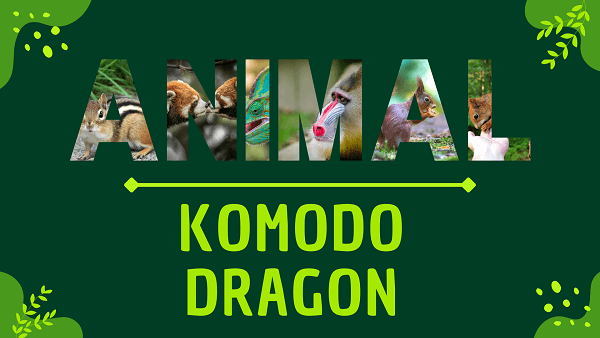Komodo Dragon Overview
Appearance
The Komodo dragon is a formidable and unique reptile known for its intimidating appearance. It is the world’s largest lizard, growing up to 10 feet in length and weighing over 150 pounds.
These creatures have a stocky build, sturdy limbs, and a long, muscular tail. Their rough, scaly skin ranges in color from gray to brown, with armor-like plates along their back. Their fearsome, forked tongue and sharp, serrated teeth contribute to their menacing look.
Origins And Evolution
The Komodo dragon (Varanus komodoensis) is a remarkable reptile with an evolutionary history dating back millions of years. It is part of the monitor lizard family (Varanidae) and is believed to have evolved from larger, ancient reptiles. These colossal lizards are native to the Indonesian islands of Komodo, Rinca, Flores, Gili Motang, and Gili Dasami.
Over time, they have adapted to their island environments, resulting in their current distinct characteristics, including large size and venomous saliva. As apex predators, Komodo dragons have played a crucial role in shaping their ecosystems and maintaining ecological balance.
Behavior and Lifestyle
Komodo dragons are solitary and carnivorous reptiles known for their patient and stealthy hunting behavior. They are apex predators and primarily feed on deer, wild boar, and smaller prey. These lizards are excellent swimmers and can also climb trees when necessary.
They are territorial animals and use scent markings and visual displays to communicate with other dragons. Komodo dragons are crepuscular, meaning they are most active during dawn and dusk, utilizing their keen senses of smell and sight to locate prey in their island habitats.
Komodo Dragon Scientific Classification
- Kingdom: Animalia
- Phylum: Chordata
- Class: Reptilia
- Order: Squamata
- Family: Varanidae
- Genus: Varanus
- Species: V. komodoensis
Komodo Dragon Locations
- Komodo Island, Indonesia
- Rinca Island, Indonesia
- Flores Island, Indonesia
- Gili Motang Island, Indonesia
- Gili Dasami Island, Indonesia
Fast Facts
- Name: Komodo Dragon
- Scientific Name: Varanus komodoensis
- Habitat: Islands, Dry savannah
- Diet: Carnivorous, Large prey
- Physical Features: Massive reptile
- Nocturnal: Diurnal mostly
- Solitary: Mostly solitary
- Unique Order: Squamata
- Lifespan: 20-30 years
- Conservation Status: Vulnerable
- Fun Facts: Venomous bite, Island endemism
Physical Characteristics
- Color: Grayish-brown
- Skin Type: Scaled, Rough
- Top Speed: 20 km/h
- Lifespan: 20-30 years
- Weight: 70-91 kg
- Length: 2-3 meters
- Age of Sexual Maturity: 5-7 years
- Age of Weaning: Not applicable
Komodo Dragon FAQs
What is a Komodo dragon?
The Komodo dragon is a large and formidable lizard native to certain Indonesian islands.
How big can Komodo dragons get?
They can reach lengths of up to 10 feet (3 meters) and weigh over 150 pounds (68 kilograms).
Are Komodo dragons venomous?
Yes, they have venomous saliva that contains bacteria which can lead to deadly infections in their prey.
What is their primary diet?
Komodo dragons are carnivorous and primarily eat deer, wild boar, and smaller animals.
Where can you find Komodo dragons in the wild?
They are found on the Indonesian islands of Komodo, Rinca, Flores, Gili Motang, and Gili Dasami.
